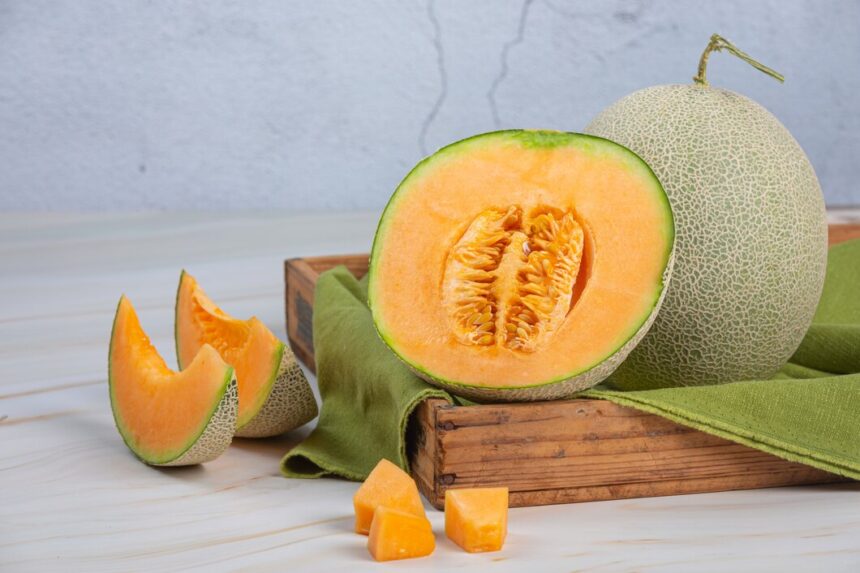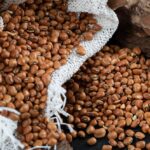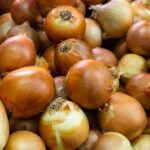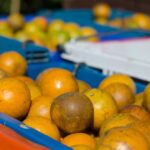Cantaloupes, known for their sweet flavor and nutritional benefits, are a popular crop among South African farmers. Growing cantaloupes from seed to harvest requires careful planning and management of various growth stages, inputs, and potential challenges. Here’s a detailed guide to help farmers successfully cultivate cantaloupes, including land preparation, soil types, irrigation, fertilization, disease management, and harvest and storage practices.
1. Land Preparation
Soil Type and Preparation:
- Soil Requirements: Cantaloupes thrive in well-drained, sandy loam or loamy soils with a pH of 6.0 to 6.8. The soil should be rich in organic matter to retain moisture while allowing for adequate drainage.
- Tillage: Begin by plowing the land to a depth of 20-30 cm to loosen the soil and incorporate organic matter. This can be done using a tractor with a plow attachment. Follow this with harrowing to break up clumps and create a smooth seedbed.
2. Seed Selection and Planting
Seed Selection:
- Choose high-quality seeds from reputable suppliers. Look for disease-resistant varieties that are suitable for the local climate and conditions.
Planting:
- Timing: Plant cantaloupes in spring after the last frost date when soil temperatures reach 18-21°C.
- Spacing: Plant seeds 1-2 cm deep in rows spaced 1.5-2 meters apart. Space seeds 30-45 cm apart within rows to allow for proper plant growth and airflow.
3. Irrigation
Water Requirements:
- Cantaloupes require consistent moisture, especially during germination and fruit development. Aim for 25-30 mm of water per week.
- Irrigation Method: Drip irrigation is highly effective for cantaloupes, providing water directly to the roots while reducing evaporation and fungal diseases. If using furrow irrigation, ensure the soil is moist but not waterlogged.
Watering Frequency:
- Water frequently during dry spells, ensuring the soil remains consistently moist but not saturated. Adjust frequency based on rainfall and temperature.
4. Fertilization
Fertilizer Application:
- Conduct a soil test before planting to determine nutrient needs. Based on soil test results, apply a balanced fertilizer with an N-P-K ratio (nitrogen, phosphorus, potassium) of around 10-10-10 or 15-15-15.
- Application Timing:
- Incorporate 2,500-3,000 kg/ha of fertilizer into the soil before planting.
- Apply additional nitrogen (around 100 kg/ha) when the plants are 4-6 weeks old, especially if leaf color indicates nitrogen deficiency.
5. Growth Stages
Germination (Days 0-7):
- Seeds typically germinate within 5-10 days under optimal conditions.
- Monitor soil moisture closely to ensure proper germination.
Seedling Stage (Days 7-21):
- Thin seedlings to allow space for growth, keeping the healthiest plants.
- Ensure adequate sunlight and water during this stage.
Vegetative Growth (Weeks 3-6):
- As plants develop leaves and vines, continue regular watering and fertilization.
- Monitor for pests and diseases during this stage.
Flowering and Fruiting (Weeks 6-12):
- Cantaloupes begin flowering approximately 6 weeks after planting. Ensure pollination, which may require introducing bees or other pollinators.
- Fruit development occurs about 2-4 weeks after flowering, with melons typically reaching maturity 80-90 days after planting.
6. Pest and Disease Management
Common Pests:
- Aphids, cucumber beetles, and melon worms can damage plants. Monitor regularly and use insect traps or introduce beneficial insects.
Diseases to Watch For:
- Powdery mildew: A fungal disease that appears as white powder on leaves. Apply fungicides such as sulfur or potassium bicarbonate at the first signs.
- Downy mildew: Causes yellow spots on leaves. Use resistant varieties and apply fungicides if needed.
- Bacterial wilt: Symptoms include wilting and yellowing of leaves. Control by managing pests that spread the disease, like cucumber beetles.
Pesticide and Herbicide Use:
- Use pesticides as a last resort. If pest populations reach economic thresholds, apply appropriate insecticides. Follow label instructions and consider integrated pest management (IPM) strategies.
- Apply herbicides before planting or early in the season for weed control, ensuring they are safe for cantaloupe crops.
7. Harvesting
Maturity Indicators:
- Cantaloupes are ready for harvest when the skin changes from green to yellowish and the stem begins to dry. The fruit should also feel slightly soft at the blossom end.
Harvesting Technique:
- Cut the fruit from the vine using a sharp knife or scissors to avoid damaging the plant. Handle with care to prevent bruising.
8. Storage
Post-Harvest Handling:
- After harvesting, cool cantaloupes quickly to preserve quality. Store them at temperatures of 0-4°C with a relative humidity of 90-95%.
- Cantaloupes can typically be stored for 1-3 weeks under ideal conditions.
Growing cantaloupes from seed to harvest requires meticulous attention to detail and management practices. By following this comprehensive guide, South African farmers can optimize their cantaloupe production, ensuring high-quality yield while effectively managing pests and diseases. With the right techniques in place, farmers can enjoy a fruitful harvest and contribute to the local market with this delicious and nutritious crop.







